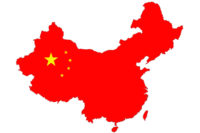TECH FLASH
China adopts EtherCAT as a national technology standard
The EtherCAT Technology Group called the announcement a new milestone for the organization which has grown substantially in China over the past few years

During a ceremony in Beijing last week, China announced EtherCAT technology is now a standard for the country.
Wei Sun, a representative of the Standardization Administration of China (SAC), made the announcement at the event which brought together experts from a variety of industries.
The EtherCAT Technology Group called the announcement a new milestone for the organization.
Founded in 2003, the EtherCAT Technology Group is an organization that includes companies from various industries and automation suppliers. It includes more than 2,900 members from 58 countries who collaborate to support, promote and advance EtherCAT technology.
EtherCAT technology became an international IEC standard and a SEMI standard in 2007. According to the group, the technology stands for “high performance, low cost, ease of use and a flexible topology.”
At the event, Chinese representatives shared their experiences using EtherCAT systems and applications. The ceremony closed with live demonstrations of various EtherCAT systems featuring Chinese and international EtherCAT products.
Yunying Huang, vice president of Shenyang Machine Tool R&D Institute in Shanghai, introduced his company’s new intelligent i5 CNC machine tool based entirely on EtherCAT. Huang said performance, openness and wide selection of products were the primary factors for selecting EtherCAT.
In addition, Ji Huan from Beihang University explained from a research point of view how CNC machines benefit from EtherCAT. Huan said the support available for EtherCAT users in China is the main advantage.
“Training classes and workshops, sample code, documentation and implementation support, as well as test and certification services, are readily available,” Huan said.
According to Beryl Fan, manager of the ETG China office in Beijing, the group has grown substantially in China over the past few years and now includes more than 400 local members.
“China is growing into the world’s largest automation market, and we are pleased to see the outstanding adoption rate of EtherCAT within this market in all kinds of applications, from machine controls, power generation and distribution to mobile applications, scientific systems and beyond,” says Martin Rostan, executive director of the EtherCAT Technology Group. “Becoming a recommended national standard in China will further boost the success of EtherCAT, providing even more local language access to the technology and ensuring acceptance in all publicly funded projects.”
Looking for a reprint of this article?
From high-res PDFs to custom plaques, order your copy today!








